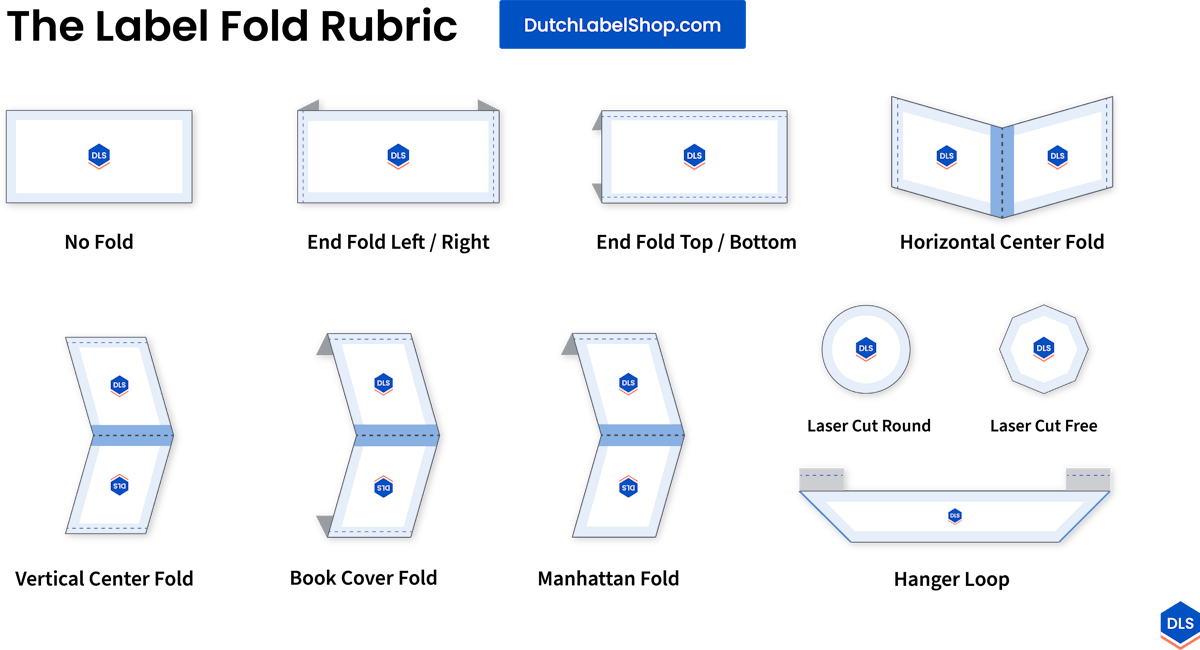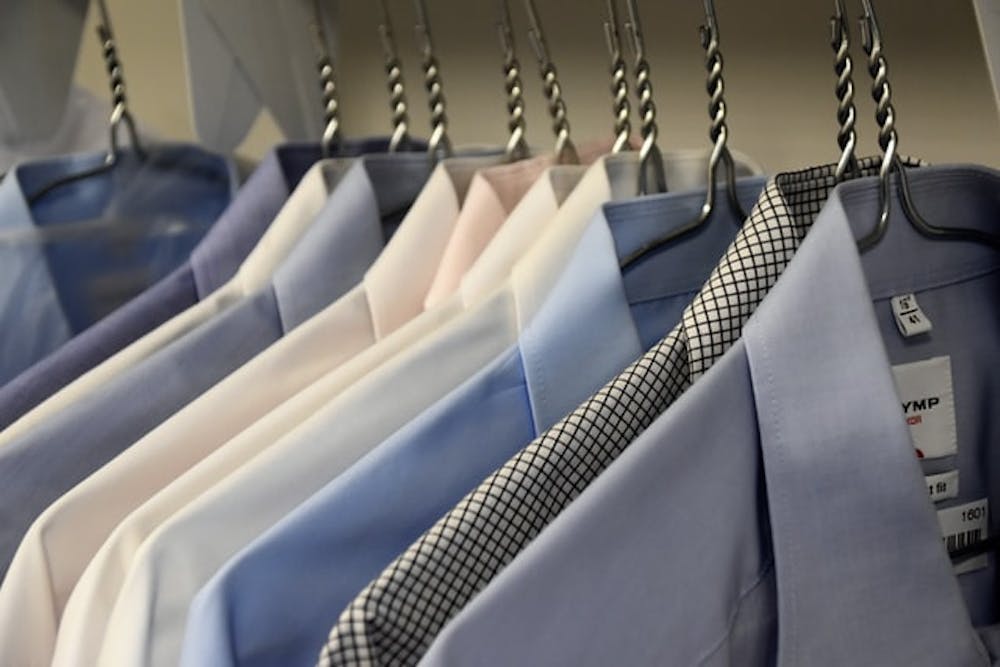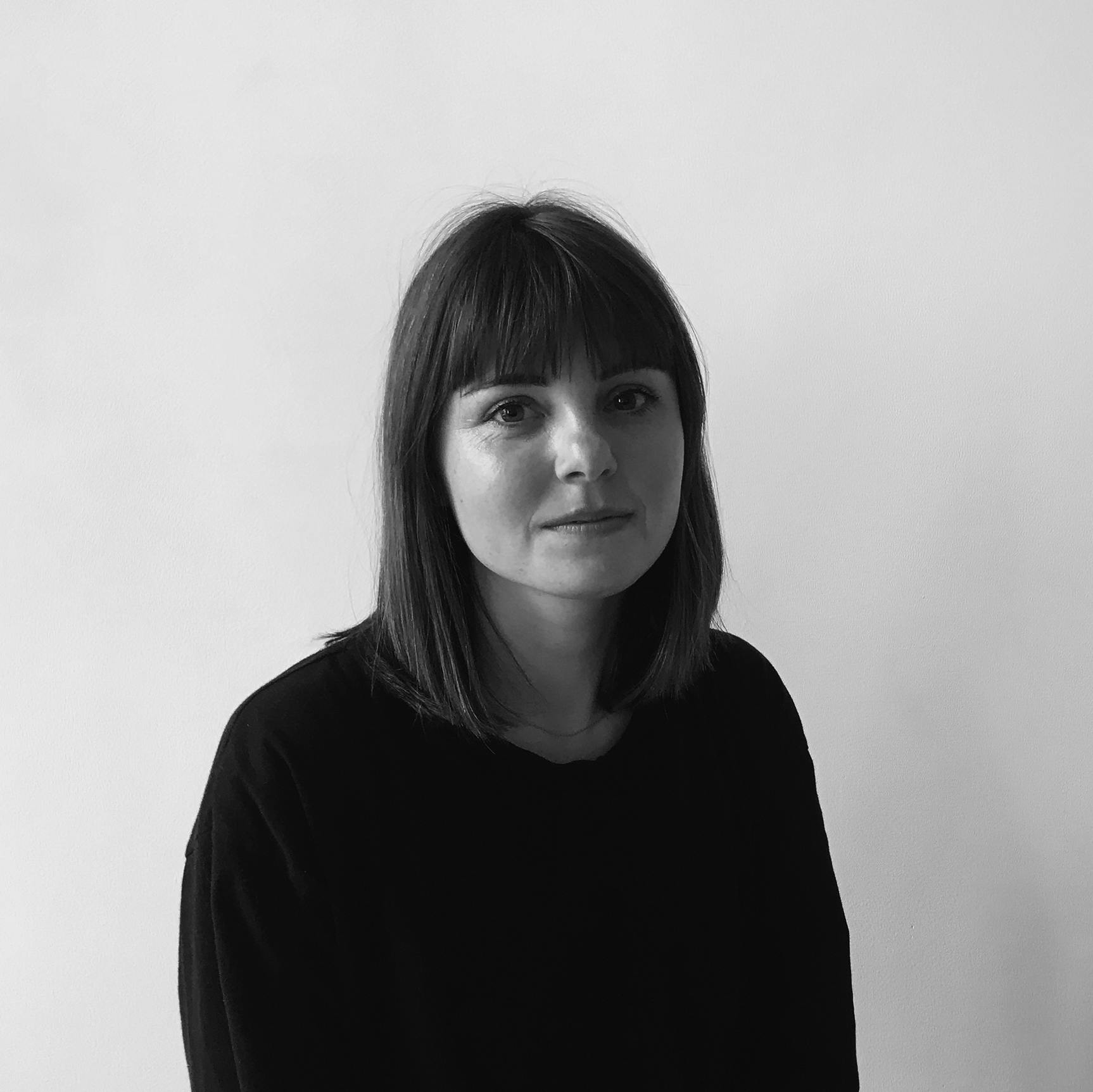There is a lot to think about when creating your perfect brand label, and getting the right shape and fold is a key element to doing that. If you haven't ordered labels with us before, you may not be familiar with all of the different options available to you, and there are a few!
The good news is, you can familiarise yourself with many different styles of labels just by taking a closer look through your wardrobe. You will probably notice a range of labels within your wardrobe so have a look at how they are folded and attached to certain garments.
These different shapes and folds all have their pros and cons, so read on to see how you can design a label to suit your needs.

Label Shapes
The shape of your label refers to the overall shape your label will be when it is flat. The standard shape of most labels is a straight-cut rectangle or square. Straight-cut is the easiest shape to add additional folds to, whether it is a fold in the center to create a centerfold label or folds at the edges to create an end fold label. We go into further detail about the different folds further down, so make sure to read on!
Straight-cut labels are not the only option here at Dutch Label Shop though. If you are after a more unusual shape, we offer custom-shaped labels to suit any branding. With the use of laser cutting technology we can cut any geometric or organic shapes you might not normally see in garment labels.

Labels Without Folds
1. A straight-cut label with no folds. The edges of this style are sealed so the label can be sewn directly onto your item as-is. This basic shape is perfect for anyone looking for labels that are needed for a variety of different applications, or for anyone wanting to add an adhesive, iron-on backing to their labels.
2 & 3. Custom-shaped labels are an option for anyone looking for labels that are a unique shape. Whether that is a circle, a star, or a cloud, labels can be made to match. Lasers are used to precisely cut these custom shapes which leaves edges sealed so they won't fray. Custom-shaped labels can be sewn into place or an adhesive iron-on backing can be added when ordering.
Labels With Folds
The fold of a label often dictates how and where you can attach it to your item, so understanding the different fold options available means that you can pick a fold to best suit your label placement. By getting the right fold, attaching labels becomes a much easier task and the finish is more likely to be neat and secure.
There are two main styles to choose from when deciding how the labels will fold. Flat fold labels are where the front face (or right side) of the label sits flat against the garment. The backside (or wrong side) of the label is usually hidden as the label is sewn into place by at least two points. Folded edges give a nice, soft finished edge.
Centerfold labels are any labels that have a folded edge horizontally or vertically through the center of the label. This method hides the backside (wrong side) of the label on the inside. This style gives you a lot of surface space as you can utilize both sides of the label. They are sewn into a garment on the side that is opposite the folded edge and this is usually done into a seam or over a hem.

Flat Fold Labels
1. An end fold left/right label is a straight-cut label shape that has folded edges on both the left and right sides. This fold type works well for landscape-orientated label designs such as brand names and logos. The folds create softer edges and are usually added to the sides that will be stitched down. This style is often used by high-end designers as the finish is very professional.
2. An end fold top/bottom label has the same characteristics as the previous end fold label, only with the folds on the top and bottom sides. This variation works well for square and portrait orientated label designs. The folds create soft edges on the top and bottom of the label where it is stitched onto a garment. This is another style that is often used by high-end designers as the finish is professional and works well in labels of all sizes.
3. A hanger Loop or miter fold label is a label that has its ends folded under at a 45-degree angle. This fold creates a loop that is perfect for hanging garments such as shirts, jumpers, and lightweight jackets from. The miter fold label works best with landscape orientated text and designs. The folded ends of this label need to be sewn into a seam, so you will often find them on garments with a collar or neckband.

Centerfold Labels
1. A centerfold label is simply a rectangular label folded in the middle to create a label with two sides. It is an extremely popular label that has a large usable surface area. This is a good option for multi-use labels where you can fit your branding on one side and fabric composition or washing instructions on the other. A centerfold label should be sewn into a seam so that the top two raw edges are sewn together, so you will usually find them in a side seam, at a back neck collar, or a back waistband.
2. Similar to the centerfold label, The manhattan fold label is folded in half to create the two sides, just with an additional fold at the top edge too. The manhattan fold is ideal for when you want the appearance and softness of the folded edge, like on a sleeve hem or cuff, but don't want to add extra bulk with a book cover fold.
3. A book cover fold is just like both the centerfold and manhattan fold labels, except the two ends that meet together each have a fold, creating a label with neat, folded edges to sew along. This label is perfect if you want one that sits over the top of a sleeve hem or cuff to show off your brand on the outside. The added folds of this style create more bulk than a standard centerfold label which is not always preferred, especially for labels that are sewn on the inside of a garment.
Finally, if you do have any further questions about label folds or shapes, don't hesitate to contact our lovely customer support team, they truly are the label experts!













